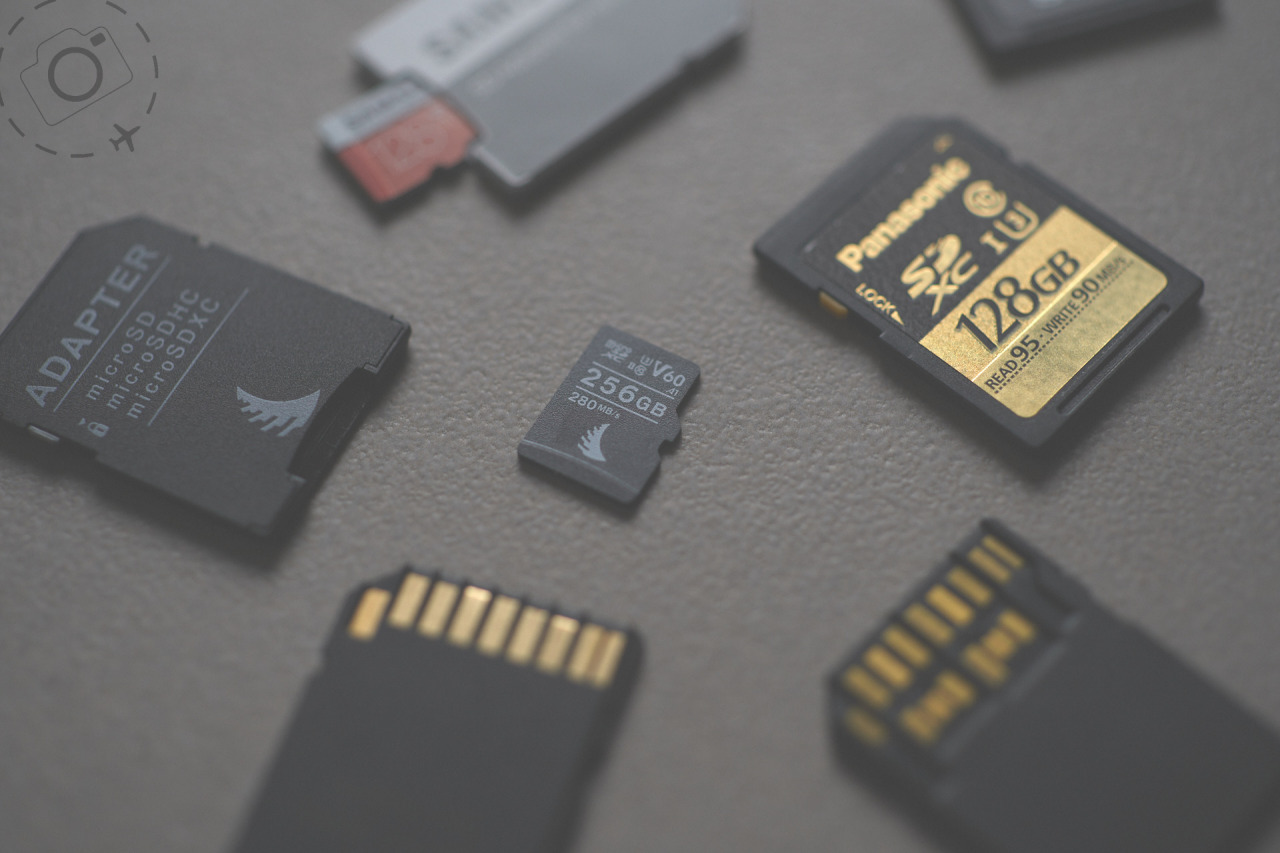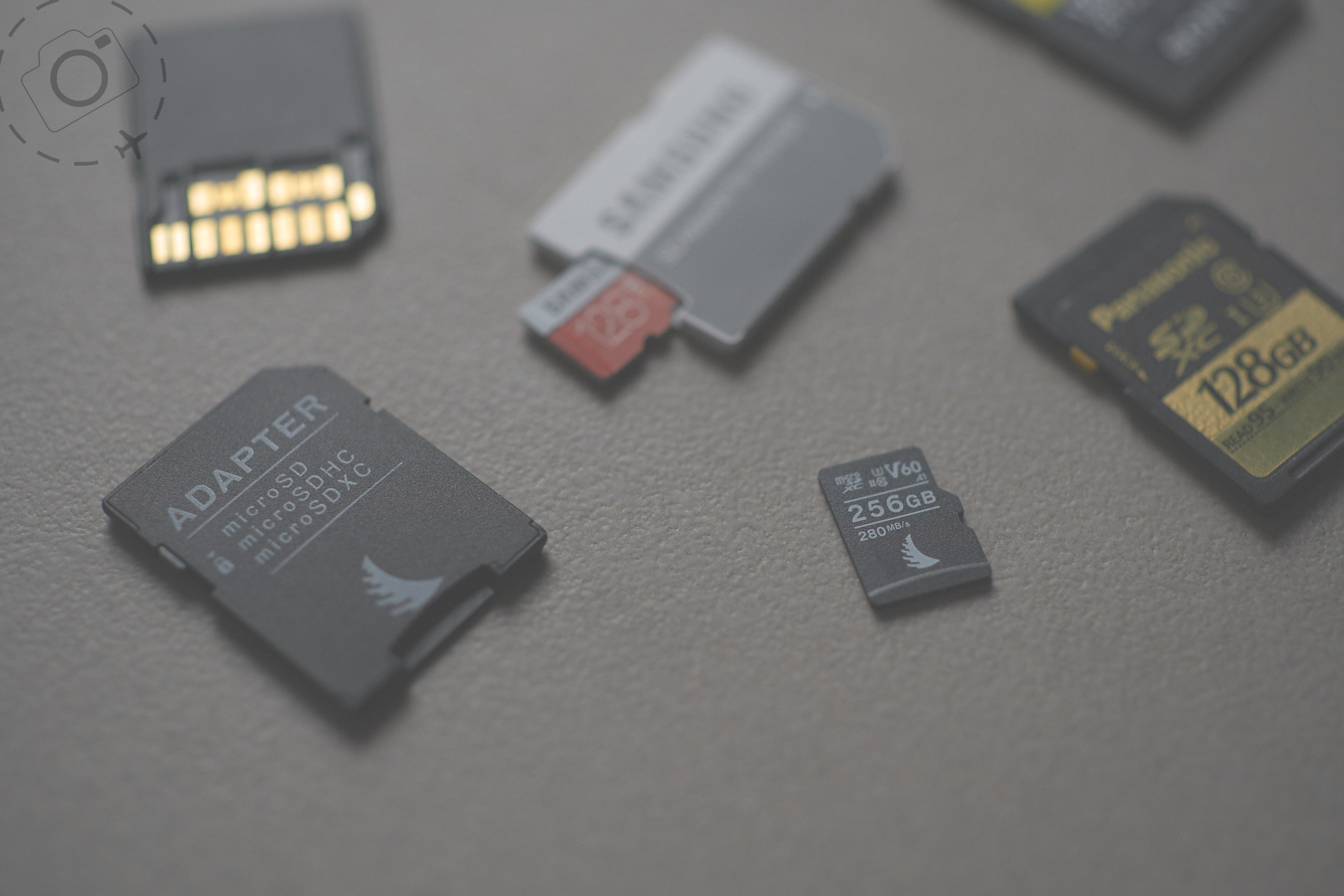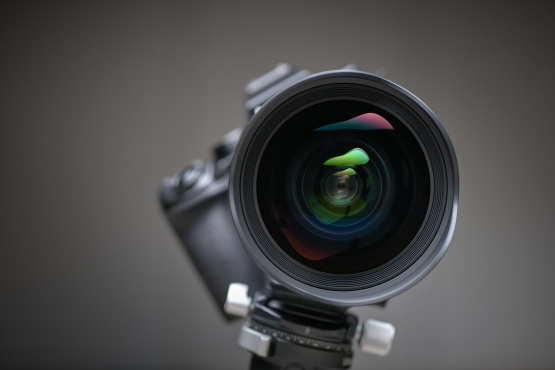The Short Version
Next time you go shopping for SD cards, make it a V60 or higher. V ratings are the minimum sustained data rate, so a V60 card won't drop below 480mbps (60MB/s * 8 bits). Things like "300x" are mostly rubbish. The max speed transfer might last for maybe 10 seconds then it drops to something useless. Angelbird are my current fave for SD cards, and be sure to take a look at the MicroSD options and well, as the V60 version of the Angelbird works great thanks to the included UHS-II adaptor.
That's the short version. Now for the details...
When Does Speed Matter
There are four scenarios when a faster SD card can make your life better. The first is shooting wildlife. My modest looking Lumix G9 is a data hungry beat in disguise, capable of shooting 60fps RAW files when filling up the internal buffer.
Every camera has internal storage, we just don’t think about this much. You capture images and they get stored internally before being written to the card slot. Manufacturers do this so they have reliable storage speeds when doing high performance tasks, such as continuous bursts, but also to attain extremely fast speeds that are much harder to deliver on removable cards. Internal buffers are very very fast. But they’re also very very finite. My Lumix G9 can store up to 50 frames internally, which I estimate to be roughly equivalent to 1GB of volume.
When I shoot birds and wildlife at 60fps, typically when employing the pre-burst feature to capture birds taking off, I can fill that 1GB buffer in a little under one second. Having captured a sequence I now need to wait for the buffer to clear from the camera to the card before I can start shooting again. THAT is where the speed of the card suddenly matters, because while I wait for room in the buffer to open up the wildlife could be doing something far more interesting than my initial burst of frames.
The second instance when clearing the internal buffer can slow me down is the “Hires Mode” which features on both the Lumix G9 (MFT) and Lumix S series (Full Frame) cameras. These models use pixel-shift technology to capture a series of frames with very slight yet precise shifts in the sensor alignment, then combines them into a single RAW file. The result is a gorgeous 80MP image on the Lumix G9, and a massive 187MP RAW file on the Lumix S1R. I’ve exhibited 80MP prints from the Lumix G9 (printed at 33 inches x 33 inches) and they are even more detailed and impressive than a single 47MP image from a larger format camera.
Pixel shifting for those big files not only benefits from a tripod, but there is an impressive amount of processing required inside the camera. If you are collecting both the individual frames plus the generated composite RAW file, you now have a large flow of data to clear to the SD card before you can capture the next frame.
The third example where speed matters is simply downloading off the cards at the end of a long day. I can easily fill a 128GB card on a magazine shoot, while sunrise on the billabongs in Arnhemland can be a data explosion when shooting Jabiru, Jacana, Terns, Geese, Finches, Kingfishers and Kites. Dumping everything from card to an SSD drive quickly means you might have time to review those images before heading out for the next adventure. In the past two decades I’ve spent a lot of time in hotel rooms, waiting for cards and backups to run but literally falling asleep before I could do anything useful.
V Ratings
One main reason for very fast cards is Video. Not so much for maximum speed of data, but sustained speed of data. When you see speed rating on SD cards such as V30, V60 or V90, you're getting a measure of the minimum sustained speed the card offers.
V30 = 30 MB/s (~240Mbps)
V60 = 60 MB/s (~480Mbps)
V90 = 90 MB/s (~720Mbps)
Also note the difference between MB/s and Mbps – Mega Bytes vs Megabits. 1 Byte equals 8 bits. That's why 30 MB/s is equivalent to 240Mbps. Just note that storage tends to quote speeds in MB/s while video settings in the camera tend to work in Mbps. It's just one extra way to get confused when comparing card speeds!
If you plan to capture 4K video at 60fps with 10-bit luminance and 4:2:2 chroma sampling, you’ll likely need a data path of 400Mbps to store what the camera is recording. So a card rated to sustain a *minimum* of 480Mbps (V60) offers a margin of safety for the demanding work of video. If you’ve dabbled with the video features of your very nice stills camera you may already have experienced some clunky behaviour or sudden halt to captures, a clear indication that the card was not fast enough.
How Fast is Your Camera
For most people a V30 card is fine. This gives you 30 MB/s (~240Mbps) of sustained writing which is good enough for general use and can even cope just fine with reasonable quality 4K video. Indeed if you have an older DSLR it’s possible the SD slot doesn’t support the faster V60 or V90 speeds anyway. If the card reader/slot isn’t rated to UHS-II then V30 is your limit. Same goes for MicroSD-to-SD adaptors, if they're limited to UHS-I then you won't get the faster speeds of a V60 or V90 MicroSD card.
I don't buy V30 cards anymore. Having switched to V60 cards because of my video work I am also seeing the benefits of having the extra speed for my stills. Those occasional glitches when a camera chokes up or the playback is rough don’t happen anymore either. Because I tend to keep my gear for a very long time – be that bodies, lenses or cards – I figured it’s worth buying something of quality that will still be useful when the next generation of sensors arrive.
V60 is my recommendation.
Smart Shopping
SD storage has become very very cheap, which is good considering how quickly you can fill a 64Gb card these days. I can nearly fill up two 128GB cards on a decent day, one in each camera body. If you think 128GB is just too big for your needs, I suggest you avoid getting into bird photography or 4K video!
Let’s look at some numbers in Australian Dollars. I’m listing a very rough street price that will no doubt have changed by the time you read this article :)
V30 64GB SD – $40
V60 64GB SD – $70
V90 64GB SD – $180
Unless you know you will need that V90 speed, it seems hard to justify spending so much money on the upgrade. V90 is what you buy when you are sure V60 is going to fail you.
Small But Fast
There’s one more variation I want to draw your attention to: MicroSD cards. I like having these in my kit instead of full sized SD cards for two reasons. Firstly my drone uses MicroSD instead of full sized SD, so with the help of adaptors I can keep a stash of spare storage that will suit either my chunky cameras or the drone. Second is the price. MicroSD cards are often significantly cheaper to shop for than regular SD. There’s simply more demand for MicroSD because they’re used in mobile phones, and most come with an adaptor so they can pop into a regular SD slot as well. Win win.
V60 64GB SD – $70
V60 256GB MicroSD – $180
There is a catch. Most adaptors are not UHS-II compatible, and are only capable of matching the V30 speeds. You need to get the faster UHS-II adaptors if you want to get V60 or V90 speeds from MicroSD.
Over the course of a few months, I ran a little test with this very configuration.
ANGELBird are a brand you may not have heard about, as they target the video market more than photographers. Their cards are very good, and I needed 256GB SD cards for some bigger project work. I buy everything in pairs, that way I can have the exact same card in both camera bodies and know what performance to expect. Buying a pair of 256GB V60 SD cards from ANGELBird was going to set me back $700. Ouch. I noticed however that a pair of their MicroSD 256GB V60 cards, with UHS-II adaptors included, was just over $300. That’s a LOT of storage and a LOT of speed for $300. This was an irresistible bargain.
For several months I've been running the ANGELBird V60 MicroSD + Adaptor for video work, in place of the Sony Tough V60 SD cards I had previously employed. I did some initial tests using the Lumix S1H and a particular 4K video mode that pulls 400Mbps of data. I could not get the cards to fail, not even after an hour of continuous recording. So we put them into our studio workflow (typically recording 6K at 150Mbps) to see what happened. After two months of slogging away we noticed absolutely nothing. No drop outs, no glitches, no cards slipping out of the adaptors, no slow downs or weird stuff. The V60 MicroSD worked just a reliably as the full size SD cards, but for half the price.

(UHS-II adaptor shown on right has extra connections for the extra speed)
V30 or NOT
The one event worth noting from this trial was the day I put the wrong card in the wrong camera. We shoot both stills and video on these jobs, and I had some an older V30 cards in the Lumix S1R bodies (shooting 47MP stills) and the super-sexy V60 cards in the Lumix S1H (shooting 6K video). I have a tidy data wrangling process at the end of each shoot, where I gather the cards from all the cameras and download direct to the NAS box. One folder for RAW stills, another for 10-bit 422 log footage. Then I return the cards, plug in a few USB cables to charge up batteries, and call it a day.
Except on this occasion I was dead tired and put one of the V30 cards into the 6K camera instead. Yikes. The next day we started shooting and I was unaware of the mix up. We got most of the way through an hour of content before I noticed the problem. We were filming the “money shot” at the end of a recipe, where the chicken gets served on a bed of rice, then topped with sesame seeds. We shoot a lot of these with camera locked down, but some moments get the dolly instead where we follow the action across the kitchen bench top. When it works, it’s gorgeous. Once you start sprinkling sesame seeds over sticky grilled chicken, however, you know there’s only one crack at it. It’s half a day's work to go shopping again and remake the dish for a reshoot.
This was the moment that my V30 card decided it couldn’t keep up with 150Mbps worth of 6K data. The more movement in the frame, the more you push the video compression and start maxing out the data rate. That dolly shot from one dish to another was exactly the kind of data bump that tests the limits of “sustained” write speeds. On this occasion, the footage stopped and we lost the hero sequence. I'm glad it was just chicken and rice, and not a wedding. Regardless, this example is why I now use V60 cards for everything.
I’ve since removed all V30 from the studio, because I might do something that stupid again!
Durability
In nearly two decades of running tours and workshops I have seen very few cards fail, but all of those instances were SD cards. Watching someone hold a useless piece of silicon that no longer contains a day or two worth of memories is a dreadful experience. In most cases recovery was not possible. SD cards are typically easy to crack by flexing, and the cheaper rated options are produced with the minimum of margins. However, you can buy very high quality cards that are designed to resist flexing and provide greater resilience to extremes. "Sony Tough” for example have a satisfyingly sturdy construction that instills confidence.
Having mentioned MicroSD cards already I would note that these are, by virtue of their size, very hard to flex. They might be easier to misplace perhaps, but much harder to destroy!
After a few months working with the ANGELBird AV Pro MicroSD I feel a lot more confident about their durability. I was worried initially that the card might slip out of the SD slot and get lost. They appear to be pretty snug and I’ve seen no incidents of movement. I could chose to place a piece of tape over the slot as well for extra security, but it seems unnecessary. I was already accustomed to the MicroSD and adaptors from my drone work, and really once you leave them in the adaptor it feels like any regular SD card. I have no problem recommending this as a way forward to anyone who finds a decent price advantage for their chosen specs, or wants the flexibility to have spare cards for both a camera and a drone.
Faster Than SD
There are faster cards out there, even faster than a V90 SD. If your camera has a suitable slot.
I mentioned the 400Mbps data setting on my Lumix S1H, which seems a little insane for most purposes but then again this is a camera designed for producing Netflix quality 4K streaming content. 400Mbps is not the high water mark however. If you want to shoot RAW video or higher quality formats such as 4:4:4 chroma or 240fps in 10-bit, then you need much faster data.
CFexpress is the new gold standard for very fast storage. It can be scaled to very large cards (2TB sound useful to anyone?) and *minimum* sustained data rates of 1000 MB/s or more are possible. Remember that V90 offers a minimum of 90 MB/s, so CFexpress can deliver an order of magnitude faster.
But you have to be really really careful when shopping. Manufacturers are keen to quote maximum speeds, but less upfront about minimum sustained speeds. Some CFexpress cards will give you 300 MB/s, some will give you 1400 MB/s.
Many camera models that have an XDQ slot will also support the CFexpress cards. Panasonic for example released a firmware update in 2019 that upgraded their S1R 47MP flagship model to use the newer and faster cards. Is CFexpress useful in the real world? It is if you’re shooting 12K RAW video, but hard to justify for stills.
256GB SD V60 by AngelBird – $330 for min 140 MB/s (exceeds V60+V90 specification)
256GB SD V90 by AngelBird – $700 for min 280 MB/s (exceeds V90 specification)
256GB CFexpress by AngelBird – $400 for min 1000 MB/s
- Ewen

Update from November 2023
I wanted to quickly update this article in light of recent experiences with the Sony Tough V60 cards (M series 256GB). I bought a set of these at a great price and have been using them in the Sony ZV-E1 while travelling around the Himalayas for two months. I like the idea of the "Tough" cards and haven't had any drama with these when shooting on the Lumix cameras at high data rates. Ironically, shooting on the Sony ZV-E1 I have had a lot of problems with the Sony Tough cards.
The camera frequently throws an error on screen to say I need a faster card, or sometimes the 4K recording is broken up and missing frames. I have two identical 256GB V60 cards and both were giving me trouble. I ran a disk-speed test on both cards using "Black Magic Disk Speed Test" and saw the problem more clearly. Sometimes I'd get a nice 120MB/s write speed, but then it quickly drops down to less than 30MB/s. Sometimes it never even got above 30MB/s. It was inconsistent. So maybe these cards aren't so tough after all.
I pulled out my older AngelBird MicroSD V60 cards, with the adaptor, and they ran just fine and even supported the higher speed data rates that the ZV-E1 rejected on the Sony Tough V60 cards. I think I'm sticking to AngelBird from now on.

Keep Reading
Join Ewen's newsletter for monthly updates on new photography articles and tour offers...Subscribe Here









